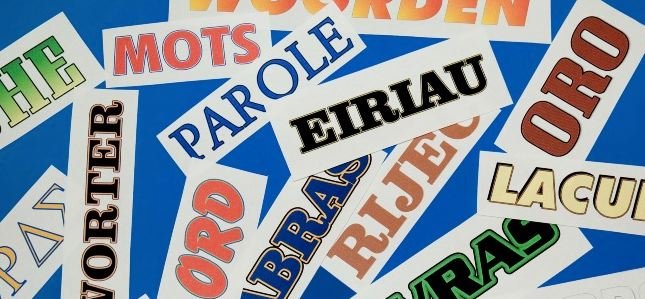SXSW Lesson 3: Tech Doesn’t Speak the Language of Copyright
 For even the best and brightest in the field of copyright, copyright is a confusing topic filled with gray areas, debatable topics and differing theories. Two people can learn all of the same facts about a case and the law around it and reasonably draw two very difficult conclusions.
For even the best and brightest in the field of copyright, copyright is a confusing topic filled with gray areas, debatable topics and differing theories. Two people can learn all of the same facts about a case and the law around it and reasonably draw two very difficult conclusions.
This includes judges and juries.
While some of this is due to inefficiencies in the law, the bigger problem is that copyright has the unenviable task of attempting to regulate creative expression in a way that both ensures creators have reasonable controls and that free speech is protected. It requires balancing many competing and ever-changing elements such as expression, technology, business interest and so forth.
The only way to write even remotely effective copyright legislation is to allow a good deal of leeway for interpretation. While this helps build the best possible balance, it also means that there are few, if any, bright lines. While this can be frustrating for artists, it’s especially confusing for the tech industry, which tends to think and operate in a more binary way.
The tech industry doesn’t speak the same language as copyright and it’s going to struggle if it wants to learn it. Sadly, even radical reform wouldn’t fix the problem.
Black and White Thinking in a World of Gray
When does a new work become “substantially similar” to a work that predates it? When does a quote or a snippet from a work become an infringement when used in a discussion about it? How much harm to the market for a work does a reuse have to do before it stops being a potential fair use?
These are just some of the many common and almost unanswerable questions that arise in copyright law every day. There are no bright line rules in these areas and every case has to be taken separately with its unique facts, lawyers making arguments and judges making decisions. Two cases with similar facts can get two very different decisions.
To the tech industry, this is extremely frustrating. Not only do they often view copyright as an obstacle to what they want to do, but there’s no clear path to getting past it. How do you program an automated aggregator to follow fair use? How do you tell a computer what the critical part of a work is so it can avoid it?
Artists, on the other hand, tend to be much more comfortable with the ambiguities and using their human intuition to navigate copyright law. Consider this recent tweet from Artists Rights to conclude a copyright-related chat they were holding today:
Final thought, copyright is simple, ask permission to copy, respect the #artist‘s wishes, then all will be well #copyrightgreyareas
— Artists Rights (@ArtistsRights) March 22, 2012
It sounds simple, but how doas a computer respect wishes when those wishes aren’t made in a format it can understand? (Note: This is one of the benefits of Creative Commons Licensing.) How does a computer program or Web service get permission from everyone and to what extent?
If copyright is complex for humans and requires intuition, instinct and feeling, it’s going to be nearly impossible for computers to grasp and that has helped put the tech industry at odds with copyright for decades.
Illustrating the Point
This has been an issue on my mind for some time but it came to a head at SXSW when, after the panel “Is Aggregation Theft?” I watched and participated in a long, spirited conversation between panelist Simon Dumenco, who is an editor at Ad Age, and an individual attempting to set up an aggregation service.
The person was looking for specific examples as to what was and what was not acceptable aggregation both ethically and legally. It was an interesting dance as the person, whose name I didn’t get, kept trying to get specific bright-line rules for how aggregators should work while Dumenco kept saying that it was more about the intentions of the aggregator and the overall picture of how they used the content.
The conversation ended without any real solutions. However, I fail to see how there could have been. When the law itself was written to allow room for intuition, feeling and perception, if your only interest in setting up a service is in obeying it, then you’re going to be frustrated.
Simply put, centuries of copyright law have created world colored in shades of gray, a world that simply can’t easily be expressed with technology that thinks in black and white.
Bottom Line
To be clear, copyright law isn’t the only area of law where the Web faces these kinds of challenges. Obscenity, privacy, trademark, etc. are all areas of law with large areas of uncertainty.
People in the tech industry are going to struggle to apply these areas of law to their work because, even if they can understand them, their tools likely can’t.
Sadly, there’s no easy way to solve this as any reform of copyright would still have to leave a lot of room for interpretation to be practical and relevant. Though you can take some steps to help, the core problem is going to remain.
Unless you can make copyright law have more bright line rules or computers better able to do interpretive thinking on these matters, there’s just no simple solution. Tech and copyright speak two different languages and have two different ways of thinking.
It’s not a matter of right and wrong, but a matter of compatibility and currently there’s no good translator that can work between the two.
Want to Reuse or Republish this Content?
If you want to feature this article in your site, classroom or elsewhere, just let us know! We usually grant permission within 24 hours.
